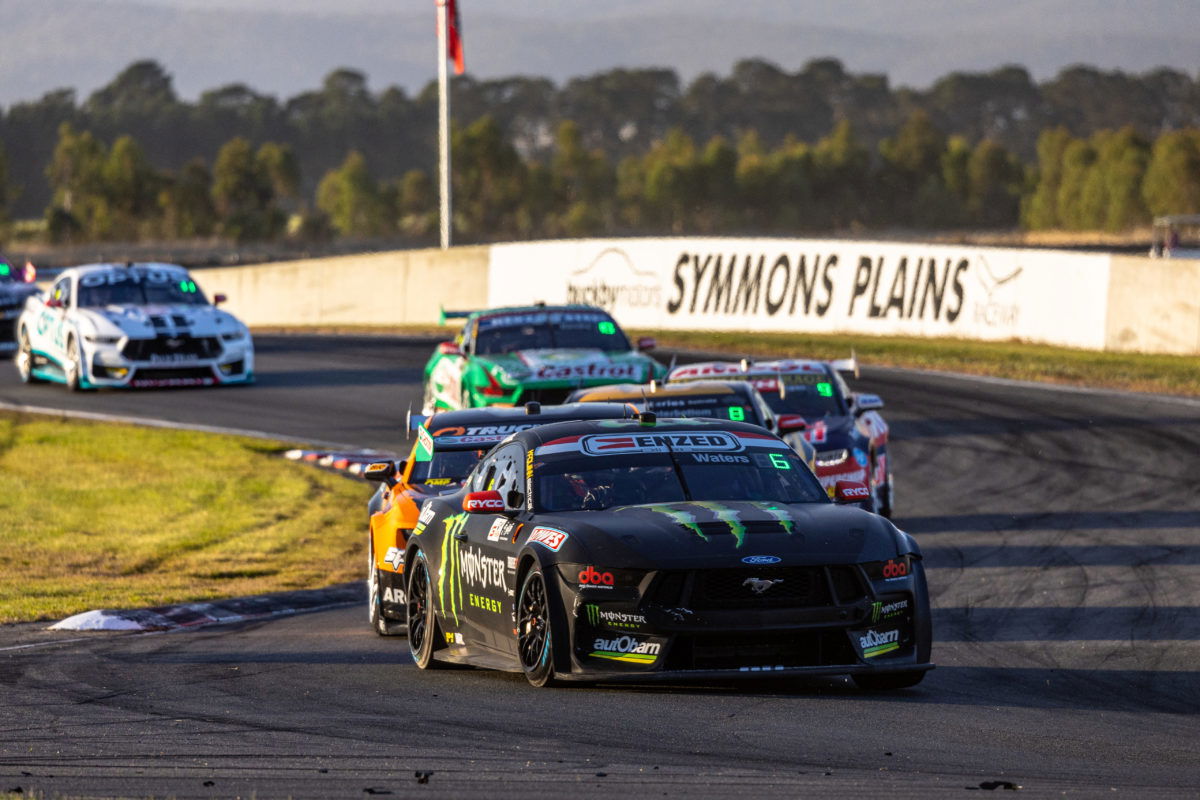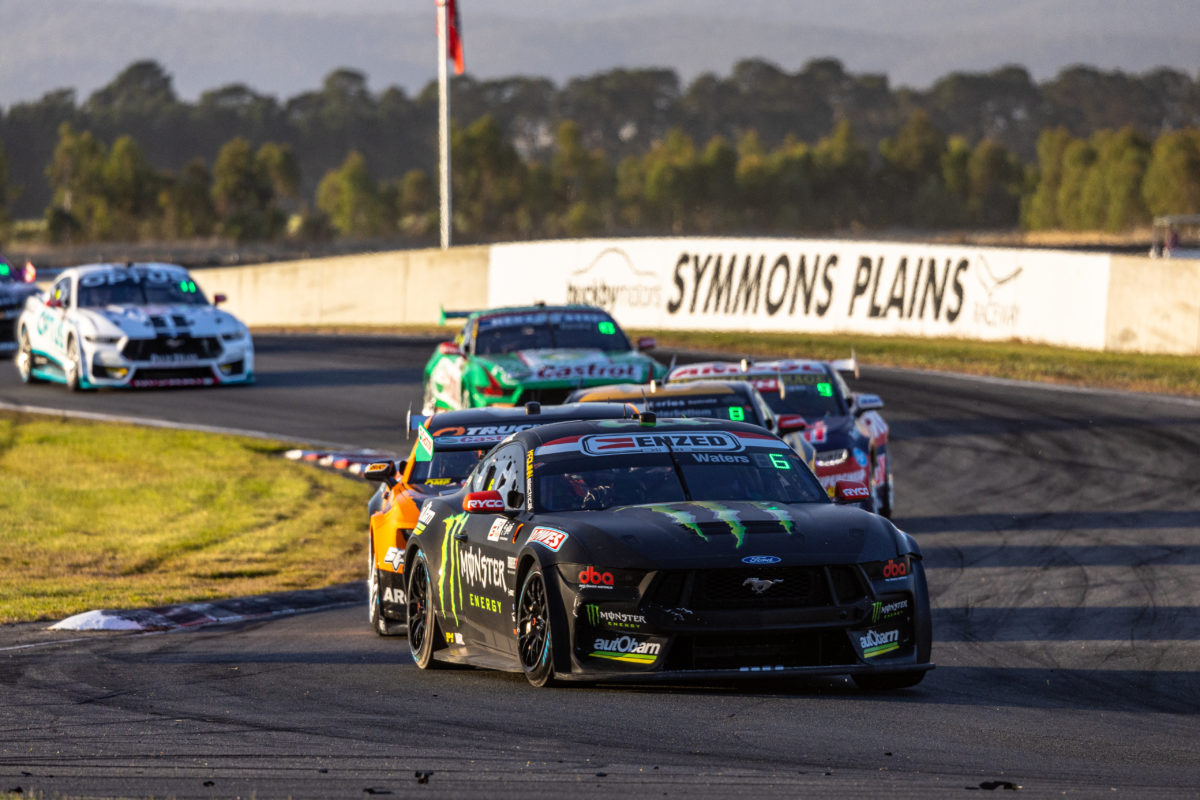

A tool which will add further rigour to Supercars’ Gen3 engine parity processes is on the way.
While Supercars’ Motorsport department is looking into the use of a transient dynamometer in Melbourne, the category has already ordered torque sensors.
It is thought that they will come online later in the year, possibly in July for the NTI Townsville 500 or Beaurepaires Sydney SuperNight, or in mid-August for the OTR SuperSprint at The Bend.
The torque sensors will be fitted to the rear axle, to provide a ‘real-world’ measure of torque output at the rear axle, and hence of engine/powertrain performance.
That is, they would provide a measurement which accounts for engine mapping, the transient engine response, and engine/powertrain inertia.
The initiative comes as the streak of a Chevrolet Camaro being first to the chequered flag in every race so far in 2023 continued last time out at Symmons Plains, when Erebus Motorsport’s Will Brown won Races 10 and 12 of the season, while Triple Eight Race Engineering’s Broc Feeney was victorious in Race 11.
Ironically, Ford Mustangs set the fastest lap in each of those three races, and the fastest lap of Qualifying for Race 10, in Part 2 of what was a three-part knockout session.
However, the Ford camp continues to argue that it is, or likely is, at a disadvantage with respect to acceleration.
As an interim parity measure, the Camaros’ shift cut has been elongated to 105ms from the standard 50ms, while the Mustangs’ is understood to have been shortened further, to 30ms, at Symmons Plains, following trials during Practice 2.
Torque sensors would identify the disparity or, if claims from the Chevrolet camp that Erebus and Triple Eight are simply doing a better job are indeed correct, put the matter to rest.
Regardless, it would seem that the new engine maps which the Mustangs used at each of the most recent two events of the season made little difference to the pecking order, although the Wanneroo map, at least, was created to improve driveability, rather than outright performance.
“To be honest, I think all this cam timing map and the throttle pedal stuff from Perth and all that, that’s just a distraction,” Tickford Racing Team Principal Tim Edwards told Speedcafe at the conclusion of the Symmons Plains event.
“We don’t have the data to know where we’re at. These things are just little anomalies that have sort of surfaced over the last couple of rounds, which probably should have been identified earlier.
“But, I don’t think, if they’re is an issue, they’re the root cause. They’re just sort of little tidy-up bits that are being addressed.
“But, we don’t know [if there is still a parity issue]. Until the transient dyno work’s done and torque sensors, it’s literally just speculation from drivers and pit lane people that there’s an issue there. Maybe there’s not.
“We honestly don’t know until some proper validation’s done, because looking at timing sectors, et cetera on the track isn’t proper validation, because there’s a thing in the middle called a driver, and driver inputs aren’t one of the channels they monitor.”
Stephen Grove, owner of his eponymous, fellow Ford team, told Speedcafe, “For us, it’s the torque sensors.
“We need to get the torque sensors on – I’m not sure how far away they are – [but] that will tell the whole story.
“We need to get them on the car, get the data, and then make the appropriate changes, and that should put everything to bed on where we are with the motors.”
The use of a transient dynamometer and torque sensors have been a wish from the Ford side of the brand divide for some time now.
The Mustang and Camaro engines were in fact run on transient dynamometers during 2022, but not on the same unit, back-to-back.
The goal then was durability testing, rather than comparing the transient engine response.
Torque sensors would provide an extra level of validation on top of the use of a transient dynamometer, which itself is a more advanced way of measuring engine performance than a static dynamometer, as Edwards explained to media earlier in the Symmons Plains weekend.
“The transient dyno is more about a validation tool, just to ensure that we have got parity between the engines,” he said.
“I suppose the best way to describe the dyno that they’re using at the moment versus a transient dyno is, when you started primary school, you have a calculator with 10 digits on it, and a plus and a minus; when you finish [high school], you had a scientific calculator with a lot more buttons on it.
“A transient dyno is just a far better tool to validate the engines, and that’ll just tell us if there’s a difference, if there’s not a difference.
“We have got, for the first time in the history of the sport, two engines that are different capacity, different architecture, and they’re very close but are they exactly the same?
“I don’t know, and we need to do that testing and then we can put it to bed, not talk about it ever again.”



















Discussion about this post